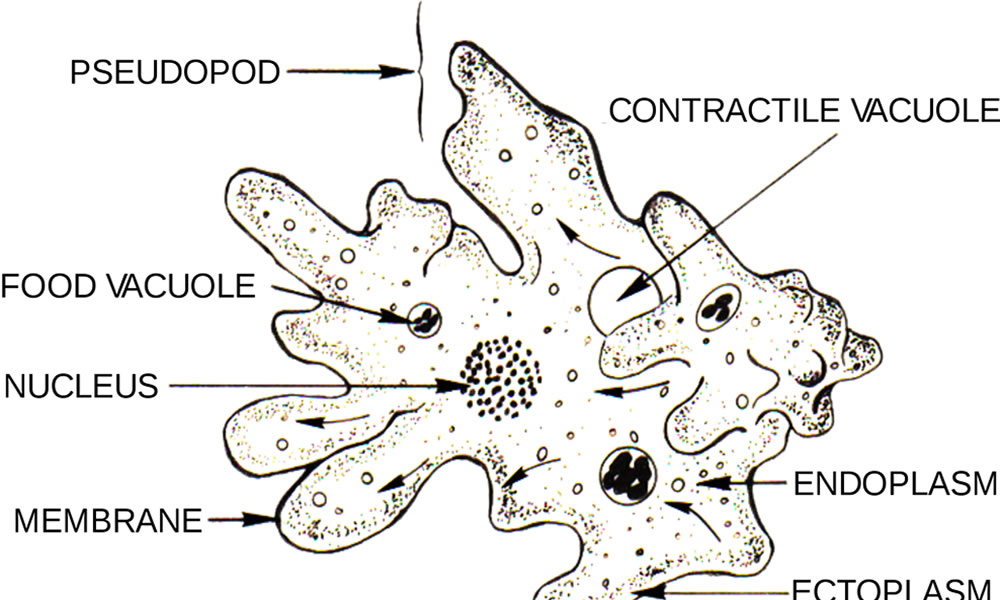As eukaryotes, how does an Amoeba move?
Eukaryote, any cell or organism possessing a well-defined nucleus, but the question is how does an amoeba move?
The amoeba as a living organism(eukaryote) refers to simple eukaryotic organisms that move in a characteristic creeping pattern.
Movement Of The Amoeba
Amoeba move by a special type of movement called amoeboid movement.
It mainly occurs when the body is in contact with a surface through the use of the pseudopodia (meaning “false legs”) to move.
When an amoeba moves, the cytoplasm flows forward to form a pseudopodium, then it aligns in the opposite direction.
In order to eat, it will form two pseudopodia and wrap them around to meet each other, enclosing its food, and then the cytoplasm aligns again.

The constant change in cytoplasmic concentration and the simultaneous process of gelation leads to the formation of a pseudopod that moves the organism forward, with the pseudopodia playing a major role in the amoeboid movement and acting as a partial organ for movement.
Different types of pseudopodia are found among amoebae, which differ in their appearance.
We have the lobose pseudopodia, which are broad, blunt cytoplasmic projections, while the filamentous pseudopodia (or phytopodia) are thin filamentous projections.
Other pseudopodia are supported by structural elements known as microtubules, which are responsible for performing cellular movements.
Reticulopodia are thin filament-like projections that bind together and actinopodia (or axopodia) are rigid, made of a core of microtubules surrounded by cytoplasm.
Amoebae can also use the pseudopodia for feeding.
An article published in 1995 in the Journal of Applied and Environmental Microbiology gives the example of the soil amoeba Acanthamoeba castellanii, which uses its pseudopodia to ingest both solids and liquids. The process of swallowing solid material is called phagocytosis.
Amoebae have receptors on the cell surface that bind to bacteria, which when phagocytosed are collected and taken up into the amoeba, usually in the back of the cell.
In the case of giant amoebas (e.g., Amoeba proteus), the process of phagocytosis is somewhat different, Giant amoebae absorb their prey “by deliberately gathering pseudopods around the bacteria.
In both cases, as the bacteria retract, the cell membrane that surrounds it detaches to form an intracellular compartment called a vacuole. The process of absorbing liquid droplets is known as pinocytosis.
Credit:
https://www.quora.com/How-does-an-amoeba-move-What-does-it-use



Leave an answer
You must login or register to add a new answer.